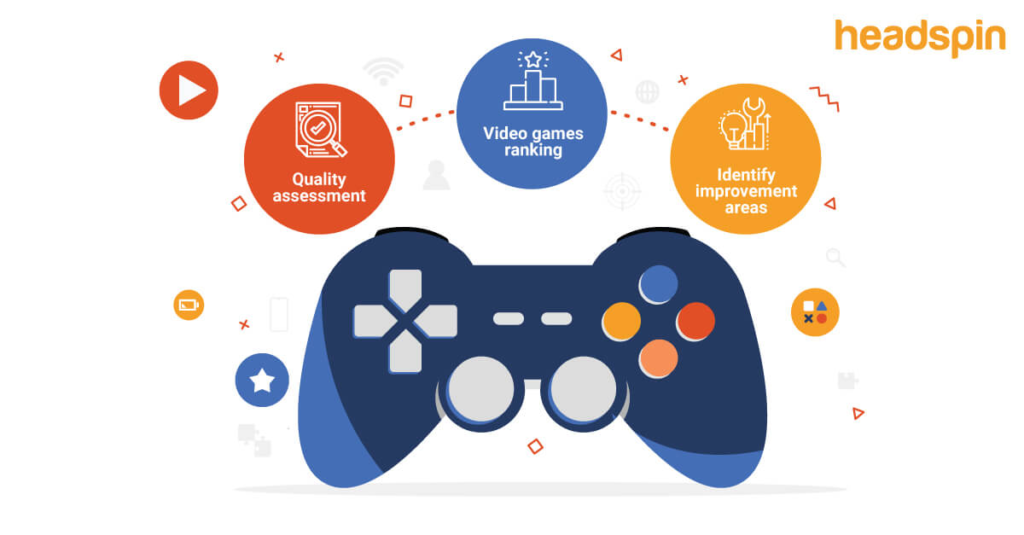Incorporating player feedback into game design is crucial for creating successful and engaging games. By actively listening to players, developers can refine gameplay mechanics, fix issues, and introduce features that enhance the overall experience.
This article delves into the importance of player feedback in game design and outlines effective strategies for integrating this feedback into the development process.

This highlights the importance of player feedback in game design.
Increasing player engagement
Player feedback helps developers understand what aspects of a game resonate with players. By incorporating this feedback, developers can create a more engaging and enjoyable experience.
When players see their opinions shaping the game, they feel valued, leading to higher retention rates and positive word-of-mouth.
Identifying and fixing issues

Players often encounter bugs, balance issues, and other problems that developers may miss. Feedback from players helps identify these issues quickly, allowing developers to address them before they become widespread. This leads to a smoother and more polished game.
Guiding feature development Players provide insights into which features they enjoy and what new content they want. By prioritizing these suggestions, developers can focus on adding features that will most likely enhance player satisfaction and increase the game’s longevity.
There are effective strategies for incorporating player feedback into game design.
Establishing feedback channels

In-game feedback systems
Implement in-game systems that allow players to provide feedback directly. This can include pop-up surveys, feedback forms, and bug-reporting tools.
In-game systems make it easy for players to share their thoughts without leaving the game.
Community forums and social media

Create and maintain active forums and social media channels where players can discuss the game and provide feedback.
Engage with these communities regularly to show that you value their input. Platforms like Reddit, Discord, and dedicated game forums are excellent for gathering detailed feedback.
Beta testing and early access Release beta versions or early access builds to gather feedback from a select group of players.
This approach allows you to test new features and gameplay mechanics in a real-world environment before a full release. Encourage testers to provide detailed feedback on their experience.
Feedback Analysis and Prioritization
Categorizing Feedback
Organize feedback into categories such as bugs, gameplay mechanics, feature requests, and balance issues.
This helps identify common themes and prioritize areas that need attention. Use tools like spreadsheets or specialized software to manage and categorize feedback efficiently.
Assessing the impact and feasibility
Evaluate the potential impact of implementing feedback on the overall game design. Consider the feasibility of changes in terms of development time, resources, and alignment with the game’s vision. Focus on the feedback that will have the most significant positive impact on the player experience.
Create a feedback loop to inform players about how to use their feedback.
Regularly notify the community of changes made based on their input and explain the reasons behind the decisions. This transparency builds trust and encourages continued engagement.
Implementing changes based on player feedback

Iterative Development Adopt an iterative development approach, where you make incremental changes based on player feedback. Regularly update the game with improvements and new features, allowing for continuous refinement.
This approach helps maintain player interest and ensures the game evolves based on real-world usage.
Balancing and tuning Use player feedback to fine-tune game balance. Players provide valuable insights into overpowered or underpowered elements, helping you create a more balanced and fair experience. Regularly adjust gameplay mechanics to maintain a challenging yet enjoyable balance.
Introducing new features Incorporate new features and content that players have requested. Prioritize features that align with the game’s core design and enhance the overall experience.
Keep the community informed about upcoming features and involve them in the decision-making process.
Resources and methods for gathering player feedback are available.
Surveys and polls Use surveys and polls to gather structured feedback from players. These tools are effective for collecting specific information about player preferences, experiences, and suggestions.
Online tools like SurveyMonkey and Google Forms can help create and distribute surveys easily.
Analytics and Metrics Implement analytics tools to track player behavior and in-game metrics. Data such as playtime, progression rates, and common failure points provide objective insights into how players interact with the game.
Combine this data with qualitative feedback for a comprehensive understanding.
User testing sessions Conduct user testing sessions where players interact with the game under observation.
This method provides direct insights into how players experience the game and highlights areas that may need improvement. User testing is particularly useful during the early stages of development.
Challenges in Incorporating Player Feedback

Filtering constructive feedback Not all feedback will be constructive or relevant. Developers must learn to filter out noise and focus on actionable insights.
It’s essential to differentiate between subjective opinions and feedback that can genuinely improve the game.
Managing Expectations While it’s important to listen to players, it’s also crucial to manage expectations. Implementing all feedback is not possible or desirable.
Developers need to balance player desires with the game’s vision and technical constraints. Communicate clearly with players about what changes are feasible.
Maintaining Game Vision Incorporating player feedback should enhance the game without compromising its core vision. Developers must ensure that changes align with the game’s intended experience and long-term goals.
Striking this balance requires careful consideration and a clear understanding of the game’s identity.
Conclusion

Incorporating player feedback into game design is vital for creating engaging, polished, and successful games. By establishing effective feedback channels, analyzing and prioritizing feedback, and implementing changes thoughtfully, developers can ensure their games resonate with players.
Embracing player feedback not only improves the game, but it also builds a loyal and supportive community, which is essential for any game’s long-term success.
